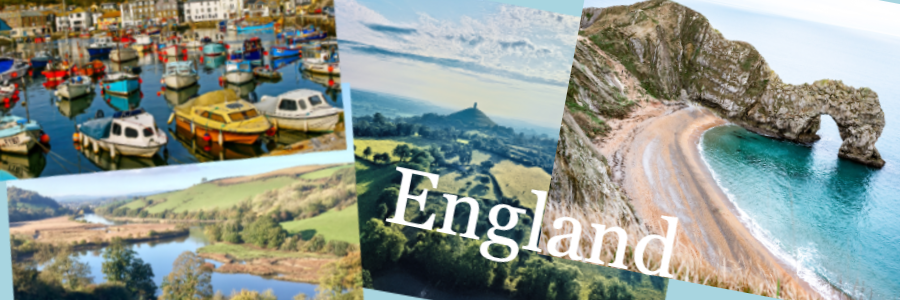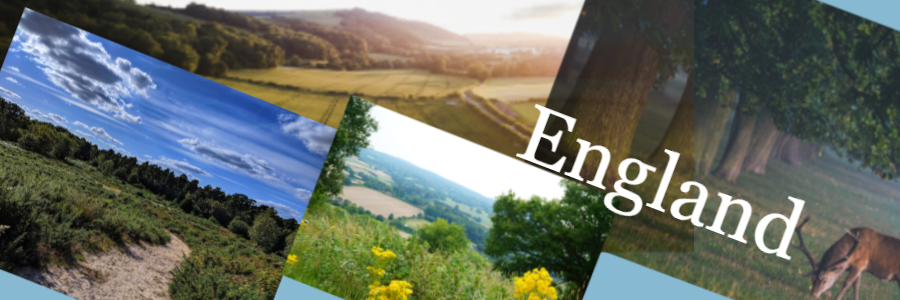More ramblings of an oenophile... with "rambling" being the operative word.
England: A green and pleasant land, where the grass is greener around every corner.
Walk down almost any English country lane these days and you're quite likely to see vineyards. More and more of them!
As the weather warms, the UK is getting more suited to vines producing an excellent quality of fruit, on a consistent, yearly basis.
New producers are setting up right across the south of the country who are aiming for commercial volumes of wine, rather than the hobby winemakers of the past decades making a handful of bottles for their own, personal consumption.
Even the French are coming here; Taittinger to Faversham in Kent, Pommery to Alresford in Hampshire.
You won't see the wines from these particular vineyards on the market for a good few years yet. Firstly, you need to wait 3 years to obtain a useable crop of grapes and, secondly, the finished wine must receive essential, bottle-ageing to develop flavour and complexity, with all of the classic, biscuity notes so beloved of connoisseurs of the Champagne style.
From Cornwall to Kent, vineyards are becoming a common sight.

Cornwall has Camel Valley (love their rosé!) Devon has Sharpham (surely the most beautiful UK vineyard setting?), Somerset has Wraxall, Dorset has Furleigh Estate.
Pinot Noir/Pinot Meunier/Chardonnay are the varieties of choice and the "Traditional Method" (i.e. Champagne) is the preferred method of putting the sparkle into the wines.
My first tasting of English bubbly was in the 1990's. It was the first release from Nyetimber. So much better in quality than the dreadful still wines of the time... and then they released the 1992 Blanc de Blancs...WOW!
That wine changed the idea that "English" was a joke.

Producers in Hampshire, known for their fizz include Coates & Seeley, Hambledon, Hattingley Valley and the new Black Chalk.
Moving to Sussex, numerous top names are Ridgeview, Wiston Estate (the new home of Dermot Sugrue, original winemaker at Nyetimber) and Nyetimber, itself, probably the best-known of them all.
As you move east, the soils gradually change. The hills of the South Downs have the same chalk as found in Champagne, France. Perfect planting conditions and an improving climate make this area a "go-to" for those who want to experience some of the best wines in England.
Surrey's contribution to the English wine scene include Denbies, Greyfriars and Albury Organic; all based on the North Downs.
Kent, the county originally known for hop growing, now has some exciting winemaking from the likes of Davenport (natural/organic wine), Chapel Down (now with a new sparkling Bacchus) and Gusbourne (famed for their "Blanc de Blancs" Chardonnay fizz).
Remember the summer of 2016? Endless days of 30°C sunshine ripening the grapes? You've got it!
New to Frazier's is the 2016 Brut Reserve.
A relative newcomer, Gusbourne is located in Appledore, Kent, their first release of sparkling wines came in 2010.
60ha of vineyards are in Kent, with a further 30ha in West Sussex so, by UK standards, a pretty large operation.
Charlie Holland, the winemaker, has become the only three-time winner of the IWSC English Wine Producer of the Year. A great pedigree in such a short time.

40% Chardonnay, 33% Pinot Meunier & 27% Pinot Noir
36 months lees ageing
Partial barrel-fermented base wines.
Deep gold in colour, delicate mousse, perfume of honeyed green apples with hints of lemon, white peach and toasted nuts.
A fruit-driven palate with flavours of red apples, poached pears and cherry/strawberry red fruits. Finishes with notes of freshly baked bread, roasted nuts and apple pie. Long and elegant.
Drink this with seared scallops, smoked eels, or good-old English, fish & chips!

